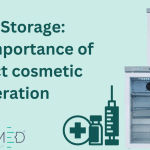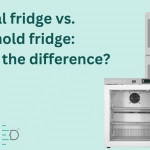
Blood is donated across the UK every day. But what actually happens to it? From the moment it is donated to the moment it is used in a transfusion, here is a guide to the standard process that is currently used to ensure it is stored properly and is safe to use by the time is reaches the patient.
1. Blood Is Donated and Processed
The first stage is the donation itself. When a donor goes to give blood, checks are carried out to ensure the donor is suitable. After this, about a pint of blood is donated per person, along with small samples that are placed into test tubes.
The blood is labelled, along with the test tubes that contain the blood to be sent for testing and the blood is then kept on ice.
The blood is taken to a processing centre where it is separated out into various parts that can be used in blood transfusions. Using a centrifuge, the blood is spun, which separates it into three main components: plasma, platelets and red cells.
2. The Blood Is Tested
While the blood donation is being processed, the test tubes are sent for testing to make sure that the blood donation is suitable for using in a transfusion. During this stage, the blood type will be determined, and the blood will be tested for a range of diseases that could be passed on to the recipient of the transfusion.
This happens at a separatelaboratory and the results will be sent directly to the processing centre. If the blood is found to be unsafe or unsuitable for using in transfusions, the processing centre will be told and the donor will also be notified.
3. The Blood Goes into Storage
Once the blood has been processed and has been cleared to use in transfusions, it must be stored. This is a very important part of the process, because blood must be stored properly to keep it in good condition and different parts of the blood need to be stored at different temperatures.
- Red cells must be stored at a temperature of 6ºC, and they can be stored for a maximum of 42 days
- Plasma needs to be frozen and it can be stored for up to a year
- Platelets do not need to be cooled and instead they are stored at room temperature in agitators, but they can only be stored for up to 5 days
For the parts of blood stored at cooler temperatures, medical fridges will be used to ensure the correct temperature is maintained. These have much more accurate temperature controls than standard fridges, as well as alarms to alert users if the temperature changes.
4. Blood Is Used In A Transfusion
When the blood is required, it is sent to hospitals where it is used in transfusions. Hospitals often keep blood units on the premises, but they will need extra units for emergencies, so it is important that the blood is available when needed.
The blood will be used to treat people who have lost blood in accidents, as well as for various treatments for patients who are suffering from illnesses.
From Donor to Transfusion
Blood donations are essential for treating people who have suffered from accidents, or who have serious illnesses and the system relies on a steady stream of blood donations. Aside from the actual donation, the storage process is essential to ensure the blood is fresh and healthy.
Correct storage is vital to keep the blood parts in optimal condition, so they can be used as soon as they are needed for a wide range of purposes, when they reach the hospitals and treatment centres.
To browse our full selection of medical fridges, click here. Speak to your local advisor
Featured Products
-

Solid Door Small Refrigerator CMS29
£542.39 £451.99 excl. VAT Add to cart -

Glass Door Small Refrigerator CMG29
£592.79 £493.99 excl. VAT Add to cart -

Solid Door Small Refrigerator CMS59
£693.59 £577.99 excl. VAT Add to cart -

Glass Door Small Refrigerator CMG59
£755.99 £629.99 excl. VAT Add to cart -

Solid Door Medium Refrigerator CMS125
£1,133.99 £944.99 excl. VAT Add to cart -

Glass Door Medium Refrigerator CMG125
£1,259.99 £1,049.99 excl. VAT Add to cart -

Glass Door Large Refrigerator CMG300
£1,763.99 £1,469.99 excl. VAT Add to cart -

Solid Door Large Refrigerator CMS400
£2,141.99 £1,784.99 excl. VAT Add to cart






